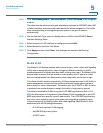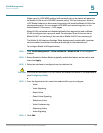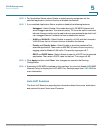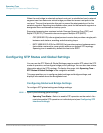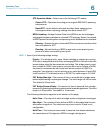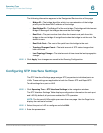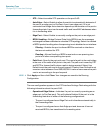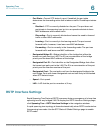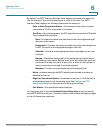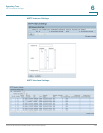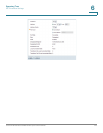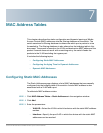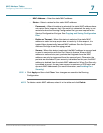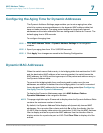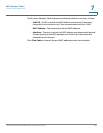
Spanning Tree
RSTP Interface Settings
Cisco Small Business SG200 Series 8-port Smart Switch 123
6
• Port State—Current STP state of a port. If enabled, the port state
determines the forwarding action that is taken on traffic. Possible port states
are:
- Disabled—STP is currently disabled on the port. The port does not
participate in the spanning tree, but is in an operational state to learn
MAC addresses and forward traffic.
- Discarding—Port is currently blocked and cannot be used to forward
traffic or learn MAC addresses.
- Learning—Port is currently in the learning mode. The port cannot
forward traffic, however, it can learn new MAC addresses.
- Forwarding—Port is currently in the forwarding mode. The port can
forward traffic and learn new MAC addresses.
• Designated Bridge ID—Bridge identifier of the bridge that offers the
lowest root path cost to a LAN. The ID is a concatenation of the bridge
priority and the base MAC address of the bridge.
• Designated Port ID—Port identifier on the Designated Bridge that offers
the lowest root path cost to the LAN. The ID is a concatenation of the port
priority and the interface number of the port.
• Designated Cost—The root path cost from the designated bridge to the
root bridge. Ports with lower designated cost are less likely to be blocked
when STP detects loops.
• Speed—Port speed.
• LAG—LAG that the port is a member of, if any.
RSTP Interface Settings
Rapid Spanning Tree Protocol (RSTP) ensures a faster convergence of a loop-free
spanning tree for any bridged LAN. To display the RSTP Interface Settings page,
click Spanning Tree > RSTP Interface Settings in the navigation window.
A rapid spanning tree topology is formed automatically when RSTP is selected as
the spanning tree mode. Use the STP Status & Global Settings page to enable
RSTP mode.



